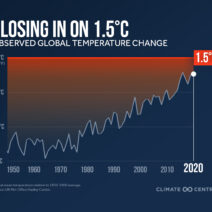The advent of renewable energy sources stands as a beacon of hope in the fight against climate change and resource depletion. One such promising avenue is Ocean Thermal Energy Conservation (OTEC), an innovative approach harnessing the temperature differential between warm surface seawater and cold deep-sea water. This method catalyzes a paradigm shift in energy generation and utilization, paving the way for a more sustainable future.
At its core, OTEC capitalizes on the vast thermal energy of the world’s oceans. The oceans absorb sunlight, resulting in warmer water at the surface. In contrast, deeper layers remain significantly cooler, creating a temperature gradient that serves as a powerful energy resource. The idea is elegantly simple: by leveraging this temperature disparity, we can drive turbines to produce electricity. This method not only promises to enhance energy generation but also offers additional benefits such as desalination and aquaculture, further elevating its importance in the realm of sustainability.
The mechanics of OTEC are intricately fascinating. Utilizing a closed-cycle system, warm seawater vaporizes a working fluid with a low boiling point—often ammonia—creating steam that turns a turbine connected to a generator. Once the steam passes through the turbine, it is condensed back into a liquid using cold seawater from deeper levels, subsequently cycled back to repeat the process. Alternatively, an open-cycle system uses warm seawater directly to create steam, which can then be collected and condensed. A hybrid approach further combines elements of both systems to maximize efficiency. These diverse methodologies reflect the versatility of OTEC technology, catering to varying environmental conditions and energy demands.
Moreover, one of the hallmark advantages of OTEC lies in its potential for baseload power generation. Unlike solar and wind energy, which are intermittent and reliant on natural conditions, OTEC can provide a consistent and stable power supply, available day and night. This reliability is paramount as regions around the globe grapple with energy shortages and fluctuating demand. By integrating OTEC into the existing energy mix, nations can achieve energy security, minimize reliance on fossil fuels, and advance toward carbon neutrality.
However, the deployment of OTEC technology is not without its challenges. Initial setup costs are substantial, primarily due to the infrastructure required to access deep ocean water. Furthermore, the logistical complexities involved in transporting and installing OTEC facilities pose additional hurdles. Despite these challenges, the long-term benefits are profound. The initial investment will yield dividends in sustainable energy production, reduced greenhouse gas emissions, and decreased ecological degradation caused by traditional energy methods.
Another critical dimension of OTEC’s contribution to energy conservation is its capacity for desalination. As freshwater sources dwindle, the demand for potable water continues to escalate. OTEC can effectively use the evaporative process to produce freshwater, alleviating water scarcity in arid regions. This dual functionality enables OTEC plants not only to generate sustainable energy but also to address pressing global water issues.
In terms of environmental impact, OTEC presents a far cleaner alternative compared to traditional energy sources. Fossil fuels’ combustion releases noxious gases, contributing to air pollution and climate change. Conversely, OTEC emits negligible greenhouse gases during operation, promoting a cleaner atmosphere. Moreover, using ocean energy creates minimal disruption to marine ecosystems when compared to other energy harvesting techniques, such as oil drilling or wind farms, which frequently disrupt local habitats.
Despite its immense potential, the realization of OTEC as a mainstream energy solution requires collaborative efforts among governments, research institutions, and private enterprises. Policymakers must prioritize and incentivize investment in OTEC technologies, fostering research and development to optimize efficiency and lower costs. Public-private partnerships could play a crucial role in overcoming initial financial barriers and advancing projects from concept to fruition.
The global community must also recognize and engage with OTEC’s capacity for hydro-cultural dynamics. Should OTEC be implemented widely, it has the power to transform the economic landscape of coastal communities. Job creation will flourish in sectors related to the manufacture, operation, and maintenance of OTEC facilities, contributing significantly to local economies. It stands as an encouraging example of how renewable energy can complement socioeconomic advancement.
As we examine the tapestry of energy solutions available today, Ocean Thermal Energy Conservation emerges as a formidable contender. Its integration into our energy frameworks promises a future where renewable resources reign supreme, addressing not only our energy needs but also our pressing environmental challenges. The oceans, teeming with untapped potential, beckon us towards a revolution in clean and sustainable energy practices.
Looking forward, curiosity should be piqued by the innovative technologies that may branch out from OTEC. As developments in thermodynamic efficiency and materials science progress, we may witness even more ingenious ways to harness ocean energy. The confluence of creativity, technology, and nature offers a plethora of unexplored possibilities. Embracing the challenge, acting decisively, and advancing Ocean Thermal Energy Conservation will promulgate a powerful transition towards sustainable living and a rejuvenated planet.







